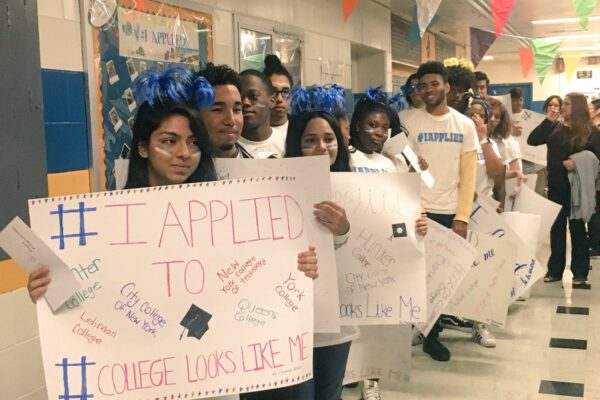Unpacking the Transition to College
Title: High School Benchmarks
Source: National Student Clearinghouse Research Center
Each year, the National Student Clearinghouse Research Center reports on the transition from high school to college. The latest report finds that as we move further away from the height of the COVID-19 pandemic, policy and practice are reverting to “normalcy,” though there are still lasting inequities in student outcomes.
Throughout the report, the authors group high school graduates by several metrics to illustrate the nuances of the transition from high school to postsecondary education, using high school characteristics such as poverty level, income level, urbanicity, share of minority students, and enrollment over time, along with college characteristics and student outcomes.
Key insights include:
High school income classification changes during COVID-19
In 2020, the United States Department of Agriculture allowed schools to provide student meals through the Summer Food Service Program rather than the National School Lunch Program (NSLP). The number of students who qualify for NSLP is a key poverty indicator, so this change resulted in fewer schools classified as high-poverty and low-income. When NSLP resumed normal administration in 2023, school poverty levels reverted to pre-COVID-19 distributions.
Outcomes by high school graduating class
Rural high schools had the largest increase in immediate enrollment following high school graduation. In 2023, 54.8 percent of graduates from rural high schools enrolled in higher education immediately, a 0.9 percentage point increase from 2022 (53.9 percent).
Students who graduated from high-minority high schools in 2021 saw their first-to-second year persistence rates increase by 2.9 percentage points over students who graduated in 2020 (77.4 to 80.3 percent). Meanwhile, students from low-minority high schools’ first-to-second year persistence rates increased by 1.7 percentage points (85.2 to 86.9 percent).
Six-year completion rates among high-poverty high schools rose from the class of 2016 to the class of 2017 (24.5 to 25.1 percent), and completion rates among low-poverty high schools decreased (59.9 to 59.4 percent).
Outcomes by high school type
Across high school characteristics, the largest disparities in enrollment, persistence, and completion rates were between high- and low-poverty high schools. High-poverty and low-income high schools had the lowest first-to-second year persistence rates (76.0 and 78.3 percent, respectively), compared with their low-poverty and high-income counterparts (90.7 and 86.7 percent, respectively).
Disparities between high- and low-income schools widened when looking at schools with a high share of minority students. Whereas 66.5 percent of 2023 high school graduates from low-minority, high-income high schools enrolled in the first fall following graduation, only 52.1 percent of students from high-minority, low-income high schools did the same.
For the high school class of 2017, six-year postsecondary completion rates varied considerably across high school characteristics. The share of students graduating college within six years who attended low-poverty high schools was 34.3 percentage points higher than the share of students from high-poverty high schools (59.4 compared with 25.1 percent).
Enrollment by major
Across several high school characteristics, students from high-poverty, low-income high schools completed degrees in STEM fields at lower rates than students from low-poverty, high-income, low-minority high schools. Whereas 22.5 percent of students from low-poverty high schools completed their STEM degree within six years, only 7.8 percent of students from high-poverty high schools did the same. Moreover, 16.9 percent of students from low-minority high schools received their STEM degree within six years, compared with 10.6 percent of students from high-minority schools.
Among 2023 high school graduates, students from suburban high schools chose a major in business, management, marketing, and related support at a higher rate than students from rural and urban high schools (13.5 percent compared with 12.1 percent for rural and urban schools).
To view the data, click click here..
—Erica Swirsky
If you have any questions or comments about this blog post, please contact us.


